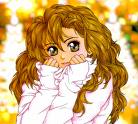KLIM

 |  موضوع: Nasal and Paranasal Sinuses of the Donkey: Gross anatomy and Computed Tomography موضوع: Nasal and Paranasal Sinuses of the Donkey: Gross anatomy and Computed Tomography  4/4/2011, 05:21 4/4/2011, 05:21 | |
| Nasal and Paranasal Sinuses of the Donkey: Gross anatomy and Computed Tomography
Fig (1): Topography of frontal and maxillary sinuses of the donkey skulls (A, B, 5
years, C&D 12 years) and head of donkey (E& F).
1, nasoincisive notch; 2, medial angle of the eye; 3, supraorbital foramen; 4, caudal border of su-
praorbital process; 5, zygomatic arch; 6, midline of skull; 7, facial crest; 8, the end of facial crest;
9, frontal bone; 10, nasal bone; 11, orbit; 12,frontal sinus; 13, frontal septum between right and left
frontal sinuses; 14, lateral compartment of caudal maxillary sinus; 15, frontomaxillary opening; 16,
rostral maxillary sinus; 17, medial compartment of caudal maxillary sinus; 18, maxillary septum
between rostral and caudal maxillary sinuses; 19, infraorbital foramen; 20, infraorbital canal; 21,
nasomaxillary opening; 22, conchomaxillary opening; 23, maxillary bone; 24, dotted line indicated
the caudal approach line of conchofrontal sinus; 25, dotted line indicated the rostral approach line
of conchofrontal sinus; 26, 2nd
maxillary molar tooth; 27, 3rd
maxillary molar tooth; 28, site of ap-
proach of caudal maxillary sinus; 29, site of approach of rostral maxillary sinus; 30,dorsal conchal
sinus; 31,the lateral segment connected the lateral extent of the caudal and rostral lines; 32, bulla
of ventral nasal conchal sinus(opened); 33, bony plate; A, lateral limit of frontal sinus; B, medial
limit of frontal sinus; C, caudal limit of frontal sinus; D, rostral limit of frontal sinus; E, dorsal limit of
maxillary sinus; F, ventral limit of maxillary sinus; G, rostral limit of maxillary sinus; H, caudal limit
of maxillary sinus.
Fig (2): Sagittal sections (A, B 12 years &C 8 years) of the head of the donkeys.
1, frontal sinus; 2, dorsal conchal sinus; 3, ventral conchal sinus; 4, middle conchal sinus; 5,
sphenopalatine sinus; 6, ethmoidal turbinate; 7, bulla of the dorsal nasal concha; 8, bulla of the
ventral nasal concha; 9, septum of ventral nasal concha; 10, septum of dorsal nasal concha; 11,
straight fold; 12, alar fold; 13, basal fold;14, dorsal nasal meatus; 15,middle nasal meatus; 16,
ventral nasal meatus; 17, hard palate; 18, soft palate; 19, frontal bone; 20,nasal bone; 21,pharynx;
22,frontomaxillary opening; 23, infraorbital nerve; 24, maxillary bone; 25,bulla of ventral nasal
conchal sinus; 26, conchomaxillary opening; 27, nasomaxillary opening; 28, lateral part of caudal
maxillary sinus; 28´, medial part of caudal maxillary sinus; 29, rostral maxillary sinus; 30 , maxil-
lary septum;31, infraorbital canal; 32,nasolacrimal duct; 33,sphenopalatine opening; 34, frontal
septum; 35, opening of middle nasal conchal sinus into caudal maxillary sinus; 36,1st
maxillary
premolar tooth; 37, 2nd
maxillary premolar; 38, 3rd
maxillary premolar; 39, 1st
maxillary molar tooth;
40, 2nd
maxillary molar tooth; 41, 3rd
maxillary molar tooth; 42, facial crest.
Fig (3): CT images (A-F) and cross sections (G, H&I caudal view and J, K&L crani-
al view) at the level of the frontal, maxillary and conchal sinuses.
1,dorsal nasal concha; 2, ventral nasal concha; 3, conchofrontal sinus;3´, frontal sinus; 4,frontal
septum between right and left frontal sinuses; 5,dorsal conchal sinus; 6,ventral conchal sinus; 7,
infraorbital canal;7´, infraorbital foramen ; 8, rostral maxillary sinus; 9, lateral part of caudal maxil-
lary sinus; 9´, medial part of caudal maxillary sinus; 10, conchomaxillary opening; 11, nasomaxil-
lary opening; 12, frontomaxillary opening; 13, lacrimal canal and nasolacrimal duct; 14, dorsal
nasal meatus; 15, ventral nasal meatus; 16, , ventral nasal meatus ; 17, maxillary septum between
rostral and caudal maxillary sinuses; 18,bulla of ventral nasal conchal sinus ; 19,bony specules
and plates; 20, nasal septum; 21, tongue; 22,oral cavity proper; 23, oral vestibule; 24, facial crest;
25,buccinator muscle; 26,superior labii levator muscle; 27,masseter muscle; 28,palatine canal;29,
common nasal meatus; 30, vomer bone within nasal septum; 31 , hard palate; 32,soft palate; 33,
palatine process of maxilla; 34, nasopharynx; 35, 2nd
maxillary premolar teeth; 36, 2nd
mandibu-
lar premolar teeth; 37, 3rd
maxillary premolar teeth; 38, 3rd
mandibular premolar teeth; 39, 1st
maxillary molar teeth; 40, 1st
mandibular molar teeth; 41, 2nd
maxillary molar teeth; 42, 2nd
mandi-
bular molar teeth; 43, 3rd
maxillary molar teeth; 44, 3rd
mandibular molar teeth.
Fig (4): CT images (A & B) and cross sections (C caudal view & D cranial view) at
the level of the ethmoidal labyrinth.
1,eye (choroid and retina); 2, dorsal conchal sinus; 3 ethmoidal labyrinth; 4, conchofrontal sinus;
5, periorbital fat and ocular muscles; 6, middle conchal sinus; 7, vomer bone; 8, Frontal septum
between right and left frontal sinus; 9, palatine bone; 10, masseter muscle; 11,medial pterygoid
muscle; 12, soft palate; 13, frontomaxillary opening; 14, stylohyoid bone; 15, oropharynx; 16, ba-
sihyoid bone; 17, omohyoid and sternohyoid muscles; 18, nasopharynx; 19, dorsal nasal meatus;
20, caudal maxillary sinus; 21, Infraorbital canal; 22,sphenopalatine vessels; 23, sphenopalatinal
opening; 24, root of tongue; 25, 3rd
maxillary molar teeth; 26, 3rd
mandibular molar teeth;
27,boney specules; 28, sphenopalatine sinus; 29, opening of middle conchal sinus into caudal
maxillary sinus.
Fig (5): CT images (A, B & CS) and cross sections (D, E caudal view & F cranial view) at the level of the frontal and sphenopalatine sinuses. 1, frontal sinus; 2, frontal bone; 3, zygomatic process of temporal bone; 4, coronoid process of the mandible; 5, frontal lobe of brain; 6, sphenopalatine sinus; 7, sphenopalatine septum; 8, pharynx; 9,auditory tube; 10, masseter muscle; 11, medial pterygoid muscle; 12, stylohyoid bone; 13, thy- rohyoid bone; 14, larynx; 15, lateral pterygoid muscle; 16,left guttural pouch;17,right guttural pouch; 18, nasopharynx; 19, cerebral hemisphere; 20,oropharynx; 21,ethmoid labyrinth; 22,basihyoid bone; 23,root of tongue and epiglottis apex; 24, soft palate; 25,olfactory bulb; 26,optic nerve; 27; mandibular salivary gland; 28, omohyoid and sternohyoid muscles; 29, alar canal. ================================================== ==== اتمنى ان تستفيدوا منه.. [ندعوك للتسجيل في المنتدى أو التعريف بنفسك لمعاينة هذه الصورة] | |
|





